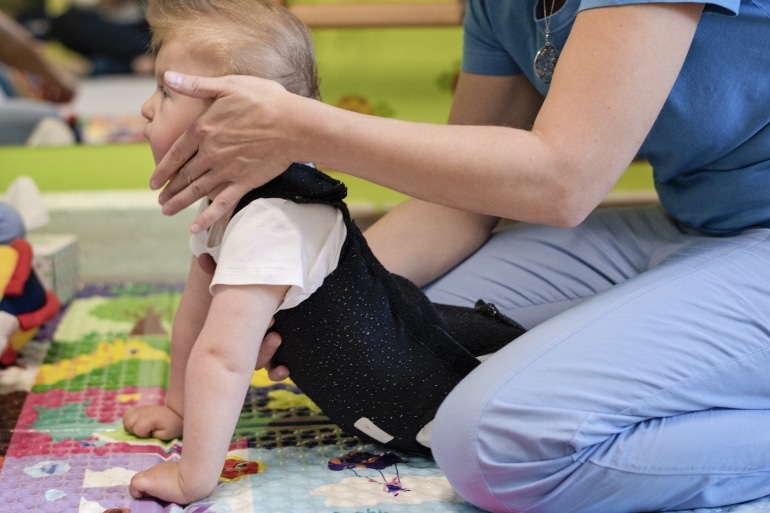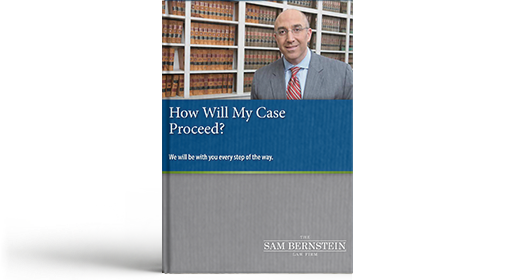BIRTH INJURY LAWYERS
If your family has experienced a serious birth injury or complications such as Cerebral Palsy caused by negligence, our birth injury lawyers will fight for you.
MICHIGAN BIRTH INJURY LAWYER
Severe injuries to children can occur during pregnancy, labor, or shortly after birth.
As a result, many parents face the challenge of providing for a child with special needs and seeking to secure the child’s future care and treatment. If a medical error caused the child’s injury, a medical malpractice claim may be possible to help ensure financial security for the potentially staggering medical costs. To make sure you’re taken care of, you should contact Michigan's most experienced personal injury law firm today. Our team of birth injury lawyers have over 800 years of combined legal experience.
We understand the emotional hardships of families dealing with traumatic birth injuries that could have been avoided. While most injuries or illnesses are usually not caused by medical treatment errors, others are linked closely with medical negligence or medical mistakes. It is necessary to take a closer look to determine if a birth injury was caused by medical malpractice.
CEREBRAL PALSY
Often, parents of children with cerebral palsy are led to believe that their child suffers from a birth defect that was unavoidable. Rarely are they told that medical errors caused their child’s disability. Many parents feel that there is no way to know what caused cerebral palsy and are unaware of the ways to search for answers.
The reality is that cerebral palsy is sometimes the result of a medical mistake that deprived a child of oxygen during pregnancy, often while the mother was in labor. Doctors have an obligation to provide adequate care during all stages of a woman’s pregnancy, including labor and the period immediately after birth. Unfortunately, doctors are capable of error or negligence.
Physician mistakes that may cause cerebral palsy include:
- Failing to perform a cesarean section when the fetus is in distress or getting too little oxygen
- Inadequately monitoring the mother during pregnancy and throughout the labor process
- Misinterpreting test results during pregnancy or outright failure to conduct necessary tests
- Failing to monitor closely when the mother has a condition like diabetes, heart disease, hypertension, asthma, renal disease, lupus, or thyroid disease
SPECTRUM OF SEVERITY
Symptoms of cerebral palsy range in severity.
An individual with cerebral palsy may have difficulty with fine motor tasks such as:
- Writing
- Cutting with scissors
- Maintaining balance and walking
- Involuntary movements such as the uncontrollable writhing motion of the hands
The symptoms differ from one person to the next, and may even change over time in the individual. Other medical disorders, like seizures or mental impairment, may affect some people with cerebral palsy. Contrary to common belief, cerebral palsy does not always cause profound disability. While a child with severe cerebral palsy might be unable to walk and need extensive, lifelong care, a child with mild cerebral palsy might require limited special assistance. Cerebral palsy is not contagious and not usually inherited from one generation to the next. At this time, there is no cure, although scientific research continues to yield improved treatments and methods of prevention.
If your child or grandchild has been diagnosed with a birth injury or cerebral palsy, contact one of our specialized birth injury lawyers as soon as possible.
MORE INFORMATION ON BIRTH INJURIES & CEREBRAL PALSY:
SIGNS OF A BIRTH INJURY
The signs that a fetus has a higher risk of birth injury include:
- A difficult and/or long labor
- Improper use of medication or other substances by the pregnant mother
- An abnormally large fetus
- Breech birth (buttocks first)
The risk increases if there is an unreasonably long delay in performing an emergency cesarean section. A pregnant woman with gestational diabetes also has an increased chance of complications at birth.
Of every 1,000 infants born in the United States, 6 to 8 of them are born with a birth injury. That means that approximately 1 in every 9,714 people in the U.S. are born with a birth injury. Based on this information, 28,000 per year are born with a birth injury, which is 2,333 per month, 538 per week, 76 per day, and 3 per hour. Therefore, it is important to take every precaution to have a healthy delivery, by seeking out a competent obstetrician or prenatal physician and carefully following his or her advice and instructions.
If your child or grandchild has been diagnosed with a birth injury or cerebral palsy, contact us as soon as possible.
TYPES OF BIRTH INJURIES
There are many types of injuries that can occur due to complications at birth.
One cause of debilitating injury results from a lack of oxygen to the brain during delivery. The lack of oxygen at this critical time can result from either an anoxic or a mechanical injury.
An anoxic injury is caused by a reduced oxygen supply, respiratory obstruction, or inadequate respiratory movements during delivery.
Similar brain damage also can result from a mechanical injury or physical trauma during birth. A skull fracture is just one devastating consequence of this kind of trauma. The improper use of forceps, suction, or force to the baby’s head can result in this or other types of mechanical injury.
Another physical injury that can result from a mistake during delivery is known as shoulder dystocia or Erb’s palsy.
Shoulder dystocia or Erb’s palsy may occur when an inexperienced or improperly trained physician damages a newborn’s brachial plexus, a delicate part of the shoulder. The improper use of forceps or other negligent actions during delivery may cause this injury.
Brachial plexus injury results in pain, a limited ability to move a hand and/or arm, or an inability to lift an arm above shoulder level.
If your child or grandchild has been diagnosed with a birth injury or cerebral palsy, contact us as soon as possible.
MEDICAL HISTORY OF CEREBRAL PALSY
In the 1860s, an English surgeon named William Little wrote the first medical descriptions of a puzzling disorder that struck children in the first years of life, causing stiff, spastic muscles in their legs and, to a lesser degree, in their arms. These children had difficulty grasping objects, crawling, and walking. As they grew up, they did not get better, but they did not get worse.
Their condition, which was called Little’s disease for many years, is now known as spastic diplegia. It is just one of several disorders that affect control of movement and are grouped under the term "cerebral palsy."
In fact, cerebral palsy is an umbrella-like description for several chronic disorders impairing control of movement, which appear in the first few years of life and generally do not worsen over time. The term "cerebral" refers to the brain’s two halves, or hemispheres, and "palsy" means any disorder that impairs control of body movement.
Thus, problems in muscles or nerves do not cause these disorders. Instead, faulty development or damage to motor areas in the brain disrupts the brain’s ability to control movement and posture adequately.
PAST AND FUTURE TRENDS
Around 764,000 people in the U.S. (including children and adults) have at least one symptom of cerebral palsy. Despite advances in preventing and treating certain causes of cerebral palsy, the number of children and adults it affects has remained essentially stable, or may have risen slightly over the past 30 years. This is partly because more critically premature and frail infants are able to survive with improved neonatal intensive care. Unfortunately, many of these infants have developmental problems of the nervous system or suffer neurological damage. Medical research is underway to improve care for these infants.
If your child or grandchild has been diagnosed with a birth injury or cerebral palsy, contact us as soon as possible.
CEREBRAL PALSY DIAGNOSIS AND TREATMENT
EARLY SIGNS
The signs of cerebral palsy usually appear before three years of age, so that parents often are the first to suspect that their infant is not developing normal motor skills. Frequently, infants with cerebral palsy are slow to reach developmental milestones, such as learning to roll over, sit, crawl, smile, or walk. Sometimes this is called developmental delay.
Some affected children have abnormal muscle tone. Decreased muscle tone is called hypotonia and caused a baby to seem flaccid and relaxed, even floppy. Increased muscle tone is called hypertonia and causes the child to seem stiff or rigid. In some cases, a newborn baby has an early period of hypotonia that progresses to hypertonia after 2-3 months. Affected children also may have unusual posture or favor one side of the body.
Parents who are concerned about their baby’s development for any reason should contact their physician, who can help distinguish normal variations in development from a developmental disorder.
- Reflexes - Reflexes are movements that the body makes automatically in response to a specific cue. For example, if a newborn baby is held on its back and tilted so the legs are above its head, the baby will automatically extend its arms in a gesture, called the Moro reflex, that looks like an embrace. Babies normally lose this reflex after they reach 6 months of age. However, those with cerebral palsy may retain it for much longer. This is just one of several reflexes that a physician may check.
- Hand Preference - Doctors also look for hand preference — a tendency to use either the right or left hand more often. When the doctor holds an object in front and to the side of the infant, a child with hand preference will use the favored hand to reach for the object, even when the object is closer to the opposite hand. During the first 12 months of life, babies do not usually show hand preference. But infants with spastic hemiplegia, may develop a preference much earlier, because the hand on the unaffected side of the body is stronger and more useful.
- Movement Problems - The next step in diagnosing cerebral palsy is ruling out the other disorders that may cause movement problems. Most importantly, doctors must determine that the child’s condition is not getting worse. Although its symptoms may change over time, cerebral palsy by definition is not progressive. If a child is continuously losing motor skills, the problem is more likely to spring from other problems, like genetic diseases, muscle diseases, metabolism disorders, or tumors in the nervous system. The child’s medical history, special diagnostic tests, and, in some cases, repeated check-ups can help a physician determine whether or not disorders are at fault.
CLINICAL DIAGNOSIS
Doctors diagnose cerebral palsy by testing an infant’s motor skills and looking carefully at the infant’s medical history. In addition to checking for the symptoms described above — slow development, abnormal muscle tone, and unusual posture — a physician also tests the infant’s reflexes and looks for early development of hand preference.
- CT Scan - The doctor may also order special tests to learn more about the possible cause of cerebral palsy in an individual child. One test is computed tomography, or CT, which is a sophisticated imaging technique that uses x-rays and a computer to create an anatomical picture of the brain tissues and structures. A CT scan may reveal brain areas that are underdeveloped, abnormal cysts (sacs often filled with liquid) in the brain, or other physical problems. With the information from CT scans, doctors may be better equipped to judge the long-term outlook for an affected child.
- MRI Scan - Magnetic resonance imaging, or MRI, is a brain imaging technique used to identify brain disorders. This technique uses a magnetic field and radio waves, rather than x-rays. An MRI gives better pictures of structures or abnormal areas located near bone than a CT scan.
- Ultrasonography - Another test that exposes problems in brain tissue is ultrasonography, or ultrasound. This technique bounces sound waves off the brain and uses the pattern of echoes to form a picture, or sonogram, of its structures. Ultrasonography can be used with infants before the bones of the skull harden and close. Although it is less precise than CT and MRI scans, this test can detect cysts and structures in the brain, is less expensive, and does not require long periods of immobility.
- EEG - If the doctor suspects a seizure disorder, he or she may order an electroencephalogram, or EEG. During this test, special patches called electrodes are placed on the scalp and will record the natural electrical currents inside the brain. The recording can help the doctor see patterns in the brain’s electrical activity which suggests a seizure disorder.
- The Intelligence Test Issue - Intelligence tests are often used to determine if a child with cerebral palsy is mentally impaired. However, some children’s intelligence may be underestimated because problems with movement, sensation, or speech due to cerebral palsy make it difficult for them to perform well on these tests.
MEDICAL PROBLEMS RELATED TO CEREBRAL PALSY
Physicians will look for other conditions linked to cerebral palsy, including seizure disorders, mental impairment, and vision or hearing problems.
For potential vision problems, the doctor may recommend an examination by an ophthalmologist. If the treating physician suspects a hearing impairment, he or she may refer the patient to an otologist.
Identifying these accompanying conditions is important and is becoming more accurate as ongoing research yields advances that make diagnosis easier. Specific treatments may address many of these conditions, to improve the long-term outlook for those with cerebral palsy.
If your child or grandchild has been diagnosed with a birth injury or cerebral palsy, contact Michigan's most experienced personal injury law firm as soon as possible.
SOURCE
https://www.cerebralpalsyguidance.com/cerebral-palsy/research/facts-and-statistics/
Client reviews

"THEY KEPT ME UPDATED."
- Veronica, Actual Client

"I WILL BE FOREVER GRATEFUL."
- Tim, Actual Client

"I FELT LIKE I WAS A PART OF THE FAMILY"
- Terrence, Actual Client

"VERY PROFESSIONAL & KNOWLEDGEABLE"
- Sherry, Actual Client

"PASSIONATE, COMPETENT, COMMITTED"
- Actual Client

"THEY STAND BY THEIR WORD."
- Actual Client

"KIND & COMPASSIONATE"
- Nancy, Actual Client

"YOU CAN TRUST THEM 100%."
- Michael, Actual Client

"HONEST, CARING, SUPPORTIVE."
- Janice, Actual Client

"THEY TOOK PERSONAL INTEREST IN ME."
- Janice, Actual Client

"I KNEW I WAS IN GOOD HANDS"
- Jerry, Actual Client

"NUMBER ONE PERSON I'D RECOMMEND."
- Actual Client

"SAM'S GOT YOU COVERED."
- Chris, Actual Client
RECOMMENDED READING

BIRTH INJURIES AND MEDICAL MALPRACTICE: WHAT EVERY...
For most people, the arrival of a new baby is a joyful exper Read more…
February 29, 2024

What Every Parent Should Know About Birth Injuries...
Bringing home a newborn with a serious birth injury is a hea Read more…
April 23, 2020

The Best Children’s Hospitals in Michigan...
Few things are more distressing to a parent than being told Read more…
August 12, 2019

When to Contact a Birth Injury Lawyer...
A traumatic birth injury is every parent’s nightmare. Drea Read more…
October 18, 2018

What Are Your Rights as a Patient?...
When you are admitted to a hospital or move into a nursing h Read more…



